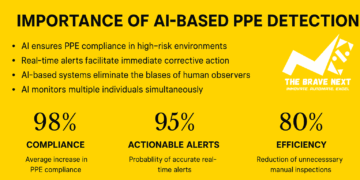Whenever we are thinking of saving money from our vehicle, the first thing that will come to our mind is the mileage. Making the vehicle more fuel efficient is the best thing which you can do to ensure that you save as much money as possible when you drive your vehicle. You might be thinking that how much speed you drive your vehicle or how many times you press brakes decides the efficiency of your vehicle. Well, one really important component of your vehicle which helps a lot in deciding its fuel efficiency is its tyres. No matter the type of vehicle that you have, the tyre will decide how much fuel it will consume. So, let’s take a look at how tyres help in deciding your vehicle’s fuel consumption and the factors that contributes to it.
Tyre’s Rolling Resistance and Fuel Efficiency
Firstly, the rolling resistance of your tyres is a big contributor in the factors that helps in deciding its fuel efficiency. The higher the rolling resistance the more will be the consumption of fuel by your vehicle. The rolling resistance of the tyres helps in becoming the deciding factor for the energy required for your vehicle to move forward. The tyre pressure, the size of the tyres, and the tread pattern of the wheels are a few factors which will help in deciding the rolling resistance of your vehicle. Various studies have provided with the report that the rolling resistance is responsible for around 20 to 30% of the fuel consumption of a vehicle.
Tyre Material and Fuel Consumption
Another important factor related to the tyres which impacts the fuel consumption of your vehicle is the material used for making the tyres. Nowadays, various fuel-efficient tyres have been introduced in the market and these tyres are called LRR or Low Rolling Resistance Tyres. These tyres are made with advanced rubber compound which makes them durable and provides them with less rolling resistance. These tyres also provide a much better grip to the surface and helps in reducing the amount of heat generated by tyres due to friction.
The latest advancement in the field of tyre manufacturing is the innovative use of silica-based material in tyre manufacturing which helps in the fuel efficiency and consumption by your vehicle. Big names in the tyre industry like Bridgestone, Pirelli, and Goodyear have also been utilizing their resources for continuous research and development to create tyre materials which can help in increasing the vehicle’s fuel efficiency as much as possible.
Tread Design and Fuel Consumption
The pattern of the tread of your wheels is responsible for the grip that your tyre will have to the surface. But this is not their only function as the tread is also responsible for the rolling resistance of the vehicle. If the tyres have a deep aggressive tread design, then they are made for off roading as they will provide the vehicle with a better grip to the surface as well as allow the driver to have a better handling of the vehicle. This tread can also be quite useful for wet road conditions. But here is the difference in the fuel economy due to tread design. Due to a deep and aggressive tread design, these tyres have higher rolling resistance leading to more fuel consumption.
On the other hand, if you look at the tyres Wolverhampton which provides you with lower rolling resistance and have low fuel consumption, they will mostly have a shallower tread design. And it will also be more streamlined. The tread is also responsible for the safety of your vehicle. As the tread helps in providing the grip to the vehicle, the tread depth also depletes as you travel. With lower tread depth, the rolling resistance will also be low but along with that your grip to the surface will also reduce making the tyres risky to use.
Tyre Pressure and Fuel Consumption
One of the most overlooked factors for when people are talking about tyre and fuel consumption is the tyre pressure. The fuel efficiency is affected when tyres are both under inflated and over inflated and in both the cases, the fuel consumption of the vehicle increases. Having the correct tyre pressure is important so that you can keep your vehicle fuel efficient. If the tyres are under inflated, then the tyres contact surface area with the road will increase leading to more rolling resistance which ultimately means more fuel consumption. Various studies have also been conducted in reference to the vehicle fuel consumption and its relation with the tyre pressure. The results have shown that if the tyre pressure is maintained properly and at optimal level then you might be able to impact the economy of your vehicle by 3 to 5 % which can be a lot if you look at it with the perspective of your annual fuel consumption. If you don’t know the optimal level of tyre pressure for your vehicle then you can either take the help of the owner’s manual provided by the manufacturer or go to a tyre shop near you and ask them the optimal level of tyre pressure for your vehicle.




















